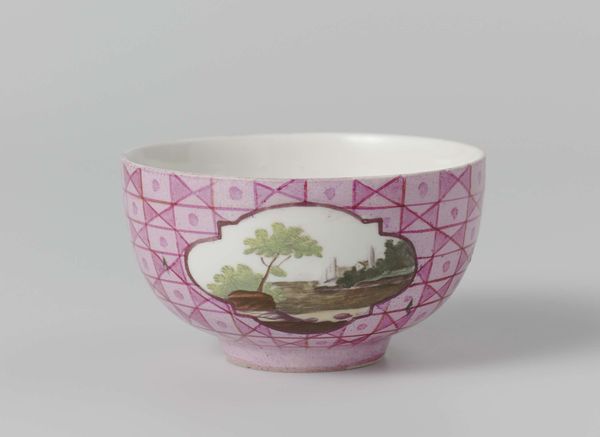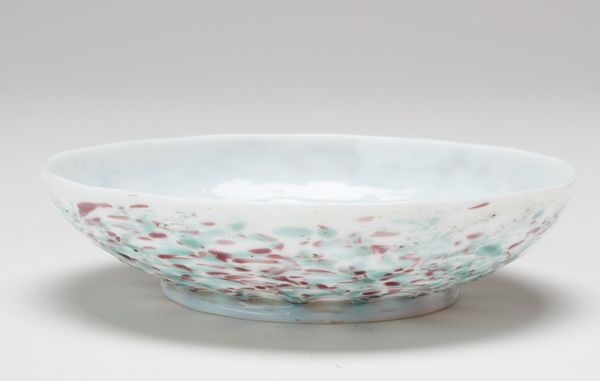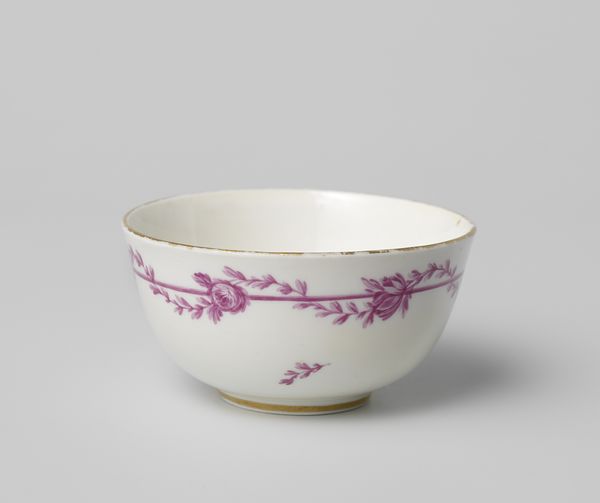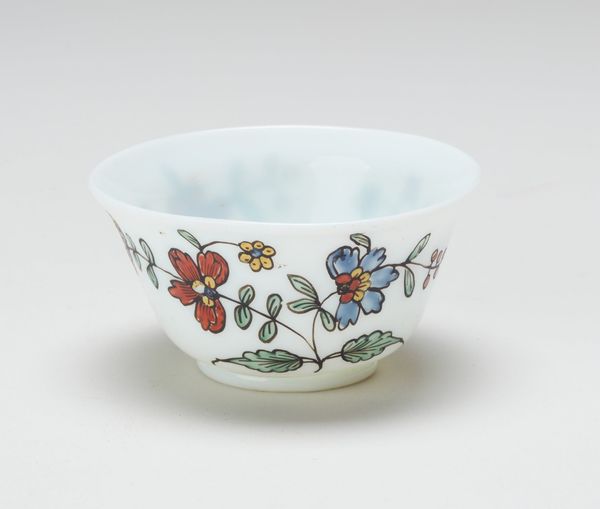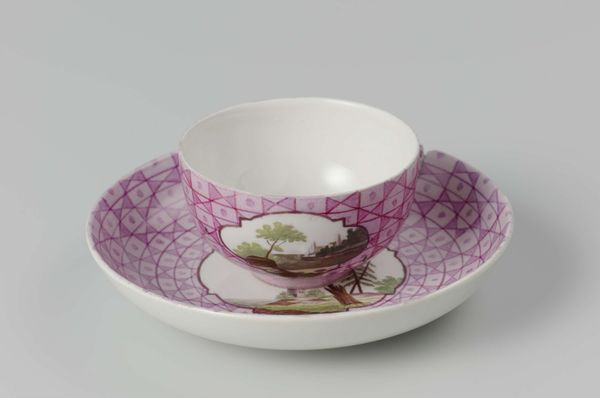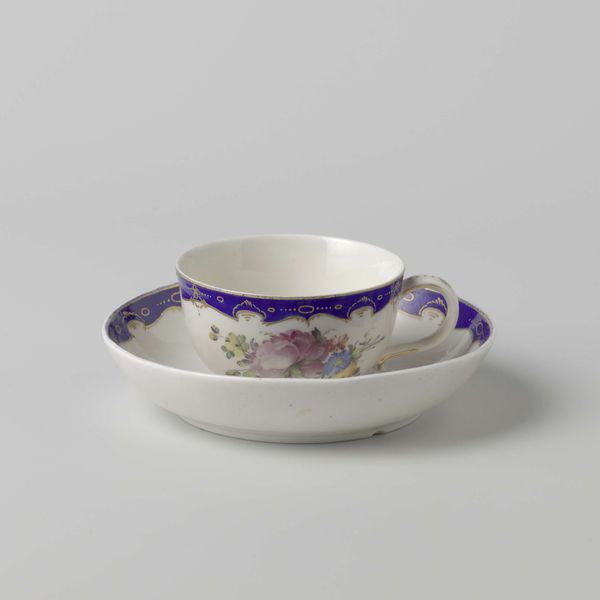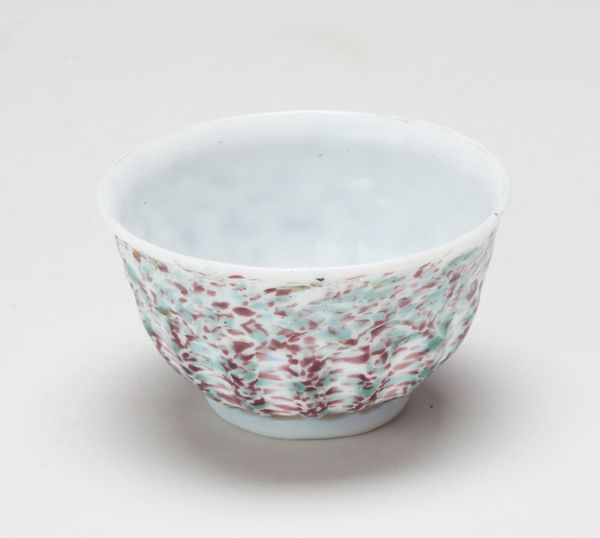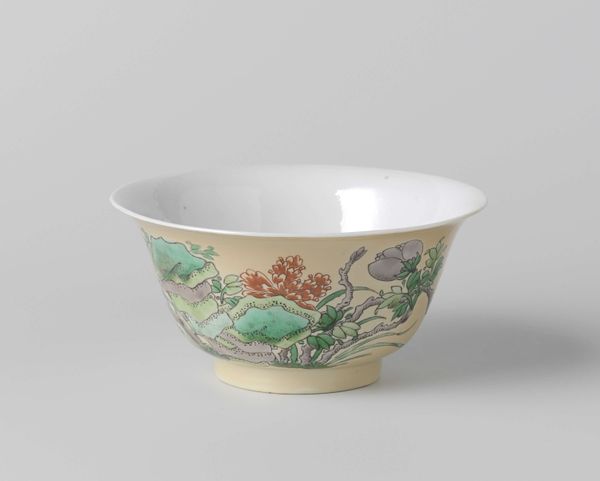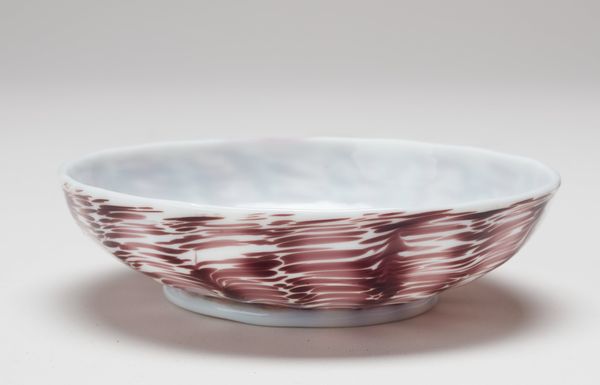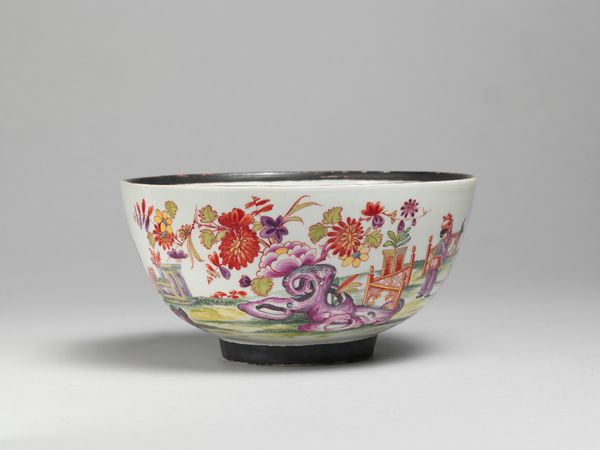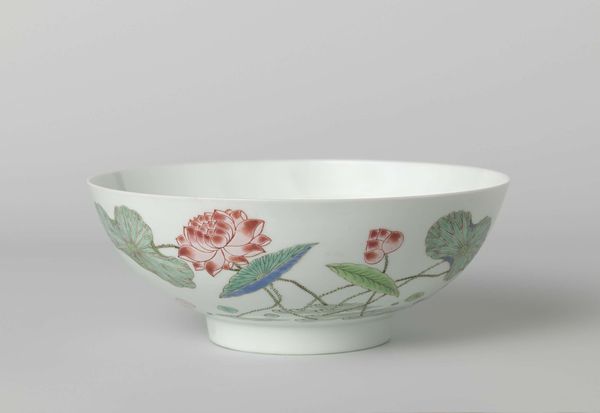
Spoelkom, polychroom beschilderd met een landschap in een medaillon uitgespaard in een geometirsch patroon c. 1759 - 1771
0:00
0:00
painting, ceramic, porcelain, pendant
#
painting
#
landscape
#
ceramic
#
porcelain
#
geometric
#
decorative-art
#
rococo
#
pendant
Dimensions: height 21.2 cm, diameter 16.6 cm
Copyright: Rijks Museum: Open Domain
Curator: I'm struck immediately by the geometric pattern in that distinctive shade of pink - a latticework almost vibrating against the smoothness of the bowl's porcelain surface. Editor: This piece, a Rococo-style "Spoelkom," dates back to somewhere between 1759 and 1771, produced by the Weesper porcelain factory. Note the delightful landscape medallion painted onto it. Curator: Yes, that central scene offers such a contrast, doesn’t it? The pastoral scene feels almost like an interruption of the repetitive geometric forms around it. What kind of social narratives are embedded within the representation of landscape here, particularly in the Dutch context of the time? Who has access to leisure versus labor? Editor: That's a crucial question. During this period, porcelain held considerable status; owning pieces like this indicated wealth. Rococo, with its inherent extravagance and overt references to aristocratic aesthetics, highlights a certain level of social aspiration, although there are some scholars that interpret the Rococo style to be a critical parody of elites. I mean the factory was established by porcelain painters escaping Meissen when there was an economical recession. Curator: Absolutely, the materiality signifies exclusivity and access. But let’s also examine the gendering of such objects. Were these delicate porcelain wares considered part of the feminine realm? How does that relate to ideas of decoration versus 'high' art, particularly if we’re exploring feminist artistic and cultural legacies? Editor: That is also central. We can think about display practices within wealthy households—where these pieces were exhibited. What type of relationship did gender and artistic expression had within a domestic context, given how deeply the space would be intertwined. Curator: These objects often became performative props of class and taste and sometimes power. It adds layers to understanding production, but it shows how cultural objects can embody social relationships. Editor: By exploring it beyond stylistic movements and dating, we allow an appreciation for porcelain, expanding far from simply decorative purposes to the world of broader socioeconomic dynamics.
Comments
No comments
Be the first to comment and join the conversation on the ultimate creative platform.
